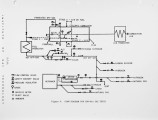| Title |
Cyclonic Combustor for Low-Btu Off-Gas Incineration |
| Creator |
Abbasi, H. A.; Khinkis, M. J.; Waibel, R. T.; Meder, S. R. |
| Publisher |
University of Utah |
| Date |
1984 |
| Spatial Coverage |
presented at Tulsa, Oklahoma |
| Abstract |
The combustion characteristics of a low-Btu off-gas and the operating performance of a 3 X 10 Btu/h pilot-scale cyclonic combustor were investigated to evaluate the incineration and heat recovery potential. The average composition of the off-gas was 8.5% H2, 1.5% CO, 22% C02, 56% N2, 3.4% CH4 and higher hydrocarbons, 7.3% H2O, 0.5% NH3, and 0.15% H2S with a higher heating value of 67 Btu/SCF. The cyclonic combustor design was selected based on a survey of burner and combustion equipment manufacturers that were contacted as to the availability of a combustor capable of burning the off-gas. Test work was carried out at the Institute of Gas Technology's Combustion Laboratory using a simulated off-gas doped with various levels of NH3 and H2S. The results of these tests are described. Stable and efficient combustion (CO < 50 ppm) was achieved at the design firing rate of 3 X 10^6 Btu/h (specific heat release 6 X 10^4 Btu/ft^3-h) and at a 4 to 1 turndown when the average gas was preheated to 350°F, and combustion air to 750°F with 15% excess air. At these conditions an estimated 65% of the fuel heating value should be available for steam generation. Flame size and shape, gas temperatures within the combustor, and flue gas composition were measured. The NOx emissions were about 480 ppm (1.1 lb N02 per 10 Btu fuel input) with less than 5% thermal N0X. N0X emissions decreased to 300 ppm (0.7 lb NO2 per 10 Btu), when the fuel NH3 concentration was reduced by 80% or when the excess air was reduced to 7%. The lower excess air level, however, may not be practical because of the possibility of very high CO emissions resulting from small imbalances in the air/fuel ratio or fuel composition. Combustion air staging and fuel staging techniques were tested for NOx reduction. Both techniques were ineffective as tested. However, combustion air staging showed potential for significant N0X reduction with modifications to the combustor design and operation. During combustion air staging, the NH3 in the fuel was not effectively converted to molecular nitrogen in the first fuel-rich stage and it reacted with the second stage air to form N0X. During fuel staging, the second stage fuel did not burn completely resulting in high CO emissions. The combustor could also be operated on lower heating value gases (down to 54 Btu/SCF) provided it was down rated. |
| Type |
Text |
| Format |
application/pdf |
| Language |
eng |
| Rights |
This material may be protected by copyright. Permission required for use in any form. For further information please contact the American Flame Research Committee. |
| Conversion Specifications |
Original scanned with Canon EOS-1Ds Mark II, 16.7 megapixel digital camera and saved as 400 ppi uncompressed TIFF, 16 bit depth. |
| Scanning Technician |
Cliodhna Davis |
| ARK |
ark:/87278/s6dr2z1m |
| Setname |
uu_afrc |
| ID |
960 |
| Reference URL |
https://collections.lib.utah.edu/ark:/87278/s6dr2z1m |






























